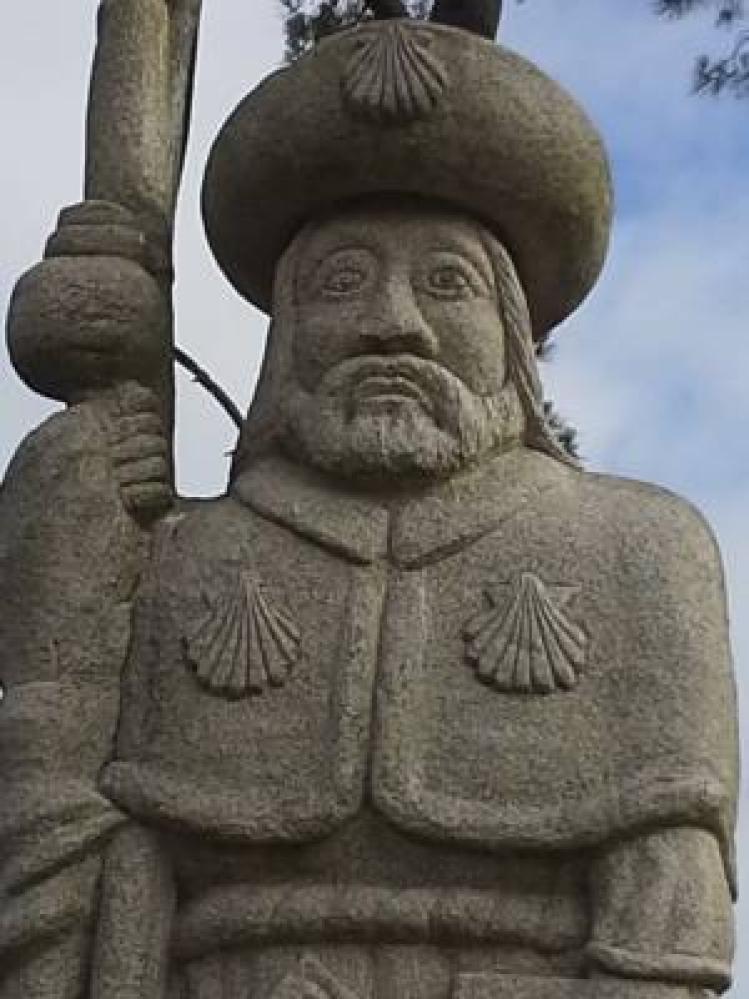
Perhaps it is a sign of the times that the main route of the Camino de Santiago, the network of pilgrimage paths across Spain, has become so crowded in the summer that peregrinos are being asked to walk lesser-used trails.
The newsletter of the American Pilgrims on the Camino urged in its summer issue that peregrinos not walk the Camino Francés, “where the hysteria over securing a bunk, avoiding bedbugs, and finding relief from crowds reaches a fever pitch.”
It is a curious thing that so many people want to walk long distances--often hundreds of miles--to arrive, sweaty and sore-footed, at what tradition holds to be the tomb of St. James the Apostle (brother of John and son of Zebedee). Of the 215,880 people certified to have arrived last year at the Cathedral of Santiago in northwestern Spain’s city of Santiago de Compostela, some 70 percent traveled the Camino Francés, which runs west across northern Spain from the Pyrenees. To gain a certificate known as a compostela, all of those people walked, rode horseback or took wheelchairs at least the final 100 kilometers, or bicycled at least the last 200 kilometers. Many traveled much further, since the Camino Francés stretches out for about 500 miles.
With my friend Jim Dwyer, I completed one of the alternate routes in July, known as the Camino Inglés. Having walked a section of the Camino Francés some years back, we decided to try the road less traveled this time, starting in the northern coast city of Ferrol, 118 kilometers from Santiago de Compostela (a very short distance for most peregrinos, but a large challenge for me).
Data from the Pilgrims’ Office at the Cathedral of Santiago show that we were among 39,581 peregrinos to receive the compostela last month. Some 3.5 percent started in Ferrol, while 1 in 4 began in Sarria, a town on the Camino Francés that is about 110 kilometers out.
The Camino Inglés is a route that English and Irish pilgrims walked in medieval times after traveling by boat to Ferrol or nearby La Coruña. It was a delight walking through the Galician countryside, with its aromatic forests of eucalyptus and pine, old stone farmhouses, medieval bridges, churches and crosses. And it was quiet: very quiet. Part of the fun of walking the Camino Francés is that it’s social—a chance to meet fellow pilgrims from many nations during the long hours of walking, and to chat in cafes on the wayside while indulging in syrupy hot chocolate and churros. On the Camino Inglés, we met only a few other peregrinos, but it was peaceful and contemplative.
Why do people still walk the way of a medieval pilgrimage? And why do so many arrange the route to qualify for the compostela? It’s a long way to walk for a document, even one written in Latin.
Emilio Estevez’s 2010 film The Way, with Martin Sheen, addresses this “why” question nicely, as does a fine new documentary, Walking the Camino: Six Ways to Santiago, that is currently making its way to theaters across the U.S.
If you saw The Way, you may recall that at the Pilgrims’ Office, new arrivals are asked their reason for taking the journey: religious, religious-cultural or solely cultural. (Now you just fill out a form.) In July, nearly half said their reasons were religious, while just 7.5 percent picked solely cultural.
It’s more “religious” than one might expect to find in contemporary western Europe. At the Cathedral of Santiago, a grand edifice that dates to the eleventh century, I sensed a heightened effort to take advantage of this for evangelization purposes. Big groups of Spanish teenagers who walked the Camino on trips organized by Catholic schools brought exuberance to the ancient church. There is a ministry directed at English-speaking peregrinos, now in its second year, run by volunteer priests and lay people. They offer a daily 10:30 a.m. Mass and evening prayer in English. At one such Mass, a Dominican priest talked about his own Camino experience to help the congregants sort out theirs.
All of this suggests that many people in highly secular western Europe are looking for something, and they are willing to walk a long way to search for it.
Please email comments to [email protected] and join the conversation on our Facebook page.
Share
Previous Story
Poetry and Prayer
Next Story
A life that demands struggle
